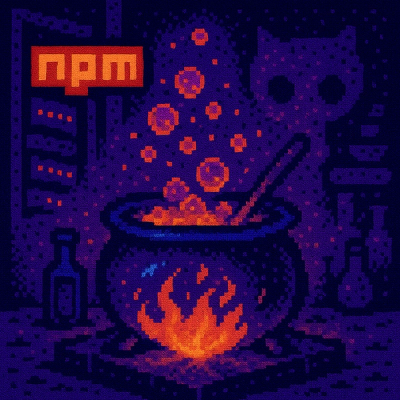
Security News
The Changelog Podcast: Practical Steps to Stay Safe on npm
Learn the essential steps every developer should take to stay secure on npm and reduce exposure to supply chain attacks.
This library provides three callables:
this_dir() returns the directory of the current Python file, or when using from an interactive session, it returns
the current working directory.append_sys_path(relative_path) allows importing from a location relative to the running Python file by
resolving relative_path relative to this_dir() and appending it to sys.path (e.g. relative_path="../foo/bar").
This also works as a context manager to allow temporary effect (e.g. with append_sys_path("foo"): ...).prepend_sys_path(relative_path) is the same as append_sys_path, but prepending sys.path in order to be the first
import location for Python to search rather than the last.The *_sys_path destructors (when exiting the with block) are safe from any side effect your package imports may have
on sys.path. It's not a naive implementation such as removing the first/last element or removing the element by value;
it employs a string subclass with an additional id property to keep tags of sys.path insertions. It is, therefore,
completely safe and allows for any further nesting of with *_sys_path within the import tree.
import locate
from pathlib import Path
this_dir = locate.this_dir()
print(f"This file is located in: {this_dir}")
print()
# Create files to demonstrate importing from a directory
foo = Path(locate.this_dir(), "foo")
foo.mkdir(exist_ok=True)
Path(foo, "bar1.py").write_text("print('Importing bar1')")
Path(foo, "bar2.py").write_text("print('Importing bar2')")
Path(foo, "bar3.py").write_text("print('Importing bar3')")
Path(foo, "bar4.py").write_text("print('Importing bar4')")
# Changing sys.path temporarily
with locate.prepend_sys_path("foo"):
print(f"I can temporarily import from: {Path(this_dir, 'foo')}")
import bar1
print()
print(f"I can no longer import from: {Path(this_dir, 'foo')}")
try:
import bar2
except ImportError:
print("Cannot import bar2")
print()
# Changing sys.path permanently
locate.prepend_sys_path("foo")
print(f"I can now always import from: {Path(this_dir, 'foo')}")
import bar3
import bar4
print()
This file is located in: C:\Users\simon
I can temporarily import from: C:\Users\simon\foo
Importing bar1
I can no longer import from: C:\Users\simon\foo
Cannot import bar2
I can now always import from: C:\Users\simon\foo
Importing bar3
Importing bar4
This package is for people who frequently use the directory of their scripts for storing files and custom modules and do not want their pipeline to break from an interactive shell. This is based on how Julia thinks about the immediate directory through its @__DIR__ macro.
locate.this_dir() is defined as:
.py file, this is the file's base directory..ipyn notebook, this is the current working directory. This is the desired/expected result since
Jupyter sets the working directory as the .ipynb base directory by default.For a good discussion on retrieving the current Python path, see https://stackoverflow.com/questions/3718657
FAQs
Locate the file location of your current running script.
We found that locate demonstrated a healthy version release cadence and project activity because the last version was released less than a year ago. It has 3 open source maintainers collaborating on the project.
Did you know?

Socket for GitHub automatically highlights issues in each pull request and monitors the health of all your open source dependencies. Discover the contents of your packages and block harmful activity before you install or update your dependencies.

Security News
Learn the essential steps every developer should take to stay secure on npm and reduce exposure to supply chain attacks.

Security News
Experts push back on new claims about AI-driven ransomware, warning that hype and sponsored research are distorting how the threat is understood.

Security News
Ruby's creator Matz assumes control of RubyGems and Bundler repositories while former maintainers agree to step back and transfer all rights to end the dispute.